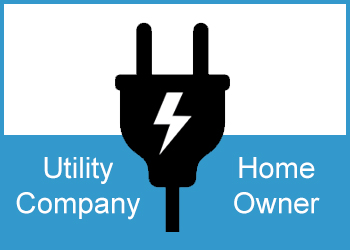 In the aftermath of a storm, knowing who is responsible for different aspects of electrical power repairs can save you time, money, and help ensure safety. Here’s an expanded breakdown:
In the aftermath of a storm, knowing who is responsible for different aspects of electrical power repairs can save you time, money, and help ensure safety. Here’s an expanded breakdown:
- Utility Company (Power Provider):
- Power Grid Restoration: The utility company is responsible for restoring the electrical grid, which includes high-voltage transmission lines, substations, and local distribution lines. After a major storm, they will typically focus on repairing critical infrastructure, such as hospitals and emergency services, before moving to residential areas.
- Power Lines and Poles: If the storm causes trees to fall on power lines, snapping poles or disrupting service, the utility provider is responsible for these repairs. Crews will remove the debris and repair or replace any damaged lines. However, if the trees are on your property, the homeowner may be responsible for tree removal before the utility company can restore service.
- Prioritization of Repairs: Utilities often follow a priority system during widespread outages, addressing high-density areas and critical needs first. They typically provide updates via text, email, or mobile apps so you can track when your area might expect power to return.
- Homeowner:
- Meter Box & Weatherhead: While the utility company provides power up to the meter, the homeowner is responsible for repairing any damage to the meter box, service mast, and weatherhead on the exterior of the home. A licensed electrician will be needed for these repairs, and in some cases, you’ll need to obtain permits or inspections before power can be restored.
- Generator Installation and Backup Power: Homeowners who install backup generators or solar power systems are also responsible for the maintenance and proper functioning of those systems. In the case of a storm, these alternative power sources can be vital, but they must be safely disconnected from the utility grid to prevent backfeeding, which could endanger utility workers.
- Downed Trees on Property: If a tree on your property damages power lines or electrical components, you may need to coordinate tree removal services before electricians or utility companies can safely make repairs. Some local regulations may require the homeowner to ensure trees are trimmed regularly to prevent storm damage.
- Insurance Considerations:
- Comprehensive Coverage: Many homeowner’s insurance policies cover electrical repairs for storm damage, especially if the damage is caused by lightning, wind, or fallen trees. However, it’s important to understand your policy’s deductibles, limits, and exclusions. Policies may not cover outdated electrical systems or issues caused by general wear and tear.
- Filing Claims: When storm damage occurs, document everything before starting repairs. Take photographs of damage to the electrical system, home, and property. Contact your insurance company to file a claim and discuss how to proceed with repairs. In cases where repairs are urgent, insurers often have preferred contractors or networks that can help speed up the process.
- Temporary Housing: If the storm causes significant electrical damage, forcing you to evacuate your home due to safety risks, some insurance policies also cover temporary housing costs. This coverage can be useful if power outages or repairs take longer than expected.
Safety Tip: After a storm, avoid approaching downed power lines, as they may still be energized. Contact your utility company immediately and stay away from any electrical hazards until professionals have secured the area.
